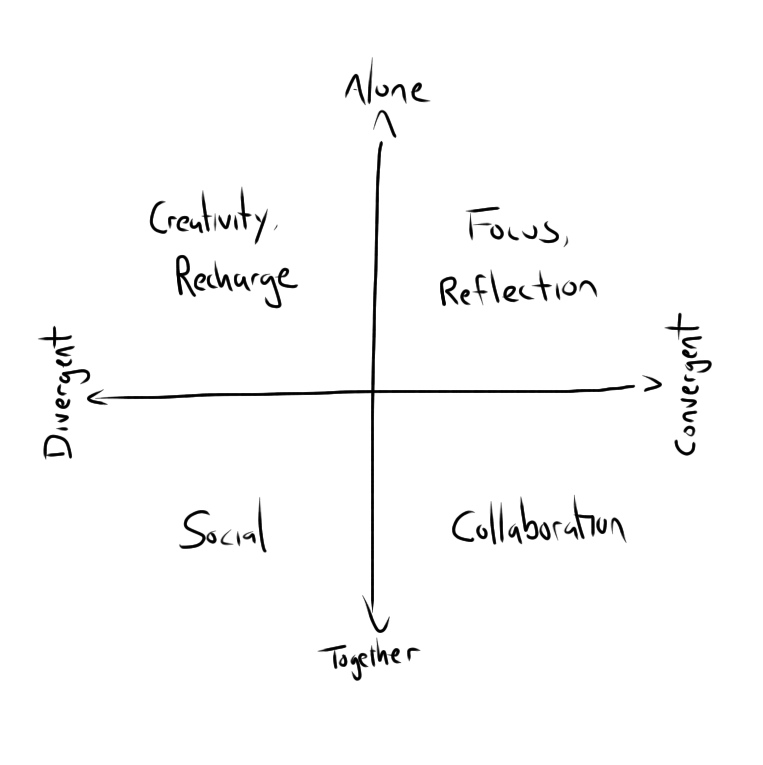The Blogger's Paradox
/Today's post is brought to you by the problem at hand...
Today's post is brought to you by the problem at hand...

Back in June 2010 my department moved to a new home in the Huang Engineering Center, the second building in Stanford's new state of the art Engineering quad. Not only did our new building differ from its predecessor in terms of termite resistance and earthquake code compliance, it also boasted an airy open office floor plan designed to boost collaboration and community among students.
Unfortunately, no one asked the students whether they actually WANTED to collaborate, and (as it turns out) most students simply want to put their heads down and be left alone. The result? On any given day, 80% of the desks in our new, social space sit empty. This "utilization rate" is well below typical levels, and it makes the prospect of commuting 1.5 hours to sit in a ghost town pretty unappealing.
This isn't ideal. It's a waste of capital and space (we could get by with 80% fewer desks), and it hinders the community and chance interactions that are so critical to creativity, innovation, and good research. Unfortunately, fixing the problem and meeting the needs of the hundred students that share the space isn't exactly easy.


And that's what's given rise to the new cardboard village that's sprouted up in one of our atria. The new space (designed by consultants from Steelcase), seeks to meet all of these diverse student needs with flexible workspaces, sit-stand desks, and small multi-desk "studios" that will house various communities of practice while cutting down on overall noise. These flexible workspaces are the latest trend for a workforce that's increasingly mobile and has come to see long stints sitting in sterile offices as "our generation's smoking". The next few months will see increasingly "real" prototypes, until at some point we get kicked out, walls get thrown up, and we (eventually) move into our new home. Given the cost involved (and the politics), it won't be a fast process, but when the renovations are done they may greatly improve the quality of life (and research) in the building.
Fortunately for me, I'll probably still be here.

On any given day, you'll likely find me hunched over my laptop at the dining room table or on my laptop at Maxfield's House of Caffeine. Summers tend to be quiet times on college campuses, and the hour commute to an empty office makes going in a tough proposition. So I spend most of my days working at home, which often leads folks to ask, "how do you stay productive?" Short answer: it isn't easy. Staying productive is a lot simpler with an office full of like-minded colleagues buzzing away on similar tasks. At the same time, many of the 6 million Americans who work from home on a given day are writers and artists and coders who don't have that option; they need to stay on top of their creative game without that external help. Doing so turns out to be completely possible, but it takes a bit of strategy and a lot of discipline. Here are some of the things I've found helpful in trying to stay productive (and creative) at home:
Read MoreBeauty in the Art of Ideas
To subscribe by RSS, add this link to your RSS reader, or: